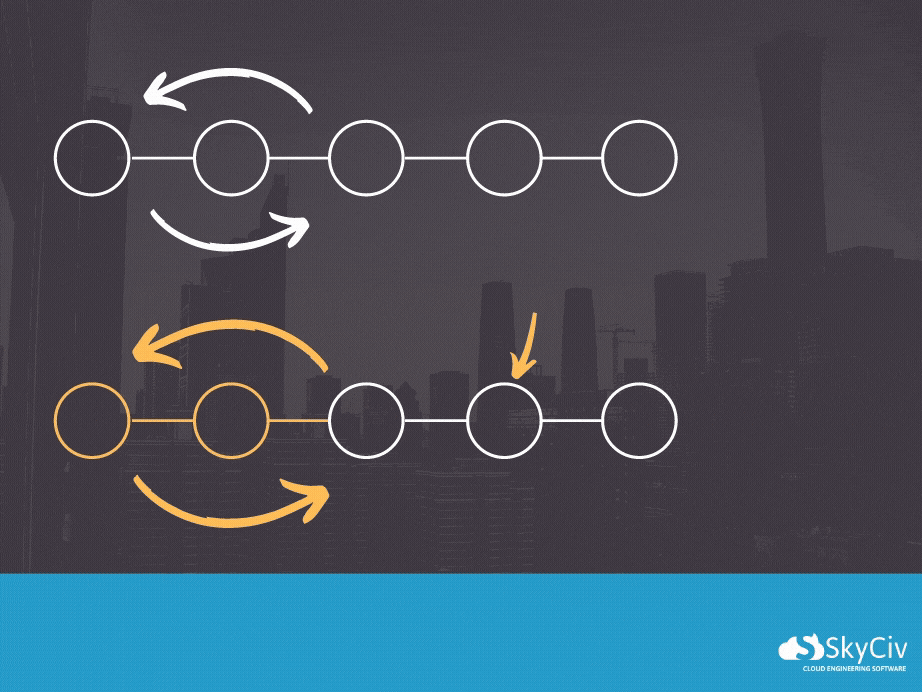What is Design Automation?
Design Automation can take number of different meanings, but simply it is the process of automating the labor intensive parts of the structural engineering design process such as modeling, analysis, design, optimization or detailing. Automation in structural engineering is not a new concept. Engineers have been using computers to automate the analysis of a structure via FEM software packages for decades. But now, we’re looking at automating even more components of the process.
It doesn’t necessarily mean the entire process will be automated without engineer touch, but it does mean that engineers will be able to leverage technology to perform the tedious and repetitive tasks to get more done. Instead of having to model the structure manually, the client/project manager can generate the model so that the engineer receives an already built structural analysis model, with exactly what they want.
The software industry is supporting this. We’ve seen a move towards API functionality in a few other AEC software packages (for instance Revit) and our very own Structural Analysis & Design API, aimed towards helping the industry achieve design automation.
A Simple Example – Automating Modeling
For this example, we’re going to draw from an existing client who has automated part of the design of platforms and substructures. The structures are quite similar, but require a quick turnaround time for the client. MonkeyToe’s solution was to build modelling/loading platform for their sales and project managers to use. This meant their structural engineer could receive a near complete structural model of what the client wants – speeding up their preliminary design process by 90%!
Without realizing it, the sales manager is able to do a lot more work for MonkeyToe by building the analytical structure exactly the way the client wants it. Now, when it gets to the engineer, they can spend much less time actually creating the model and more on refining the design, reducing the cost and finalizing the deliverables.
What is open to design automation?
Modeling
The above example gives great insight in how we can empower the project manager and even the client, to remove the modelling and preliminary design process. With the right technology, these parties can build a structural model themselves and handover an analytical model to the structural engineer of what they want. From there the structural engineer can focus on fine-tuning the model and improving the design to reduce costs for the client. Any changes that come through, will be automatic and allow the engineer to always have the latest model.
Another example is using software like Grasshopper and Dynamo. These packages allow engineers to model more complex structure, perform form-finding and even automate the rebar detailing process.
Analysis + Design Checks
Consider another of our Structural Engineering API clients; a prominent design consultant in Sydney, Australia. They were contracted to design 100+ overhead cable structures. To have an engineer sit there and manually model 100+ of these (not to mention all the client changes that came through over this 12 month project) would have taken months. Instead, they wrote a script to loop through and model, save and analyse all of these structures with the click of a button. The models were built and stored in the SkyCiv file manager, so the engineer could open the file at any time to review the model and results in SkyCiv Structural 3D.
There is a lot of room to automate the analysis and interpretation of results; particularly for repeatable structures.
Design Optimization
Structural engineers are unfortunately quite time-poor. With clients wanting packages released earlier and earlier, there isn’t much time for engineers to experiment and try different designs. With the right technology, engineers should be able to automatically test hundreds or even thousands of alternative designs to find the best fit. This is an area of design automation that is probably a few years away, but is still on the horizon. This will hopefully result in more efficient, sustainable and cost-effective designs.
Where to start?
The good news is you’re probably already doing it! Think of that Excel sheet or VBA script that is currently saving you tens of hours a week – that’s design automation. Now let’s expand that out to the rest of the structural engineering workflow:

Here we’re looking at automating the preliminary design part of the process. The one where the project isn’t won yet, where the job is uncertain, the design is changing and the client changes their mind half way though. Say we build a simple solution that captures the clients wants and automatically generates the model, applies the loads and runs some preliminary pass/check calculations. You’ve just shifted that part of the work to the client and given the answer they want in a matter of minutes. In doing this, you the user get:
- Faster, exceptional service for your client
- Time to focus on improving designs to be more cost-efficient
- Larger profit margins on the same revenue and work being done.
- Once tested, this solution reduces the risk of human error
- A scalable solution to win more projects
Get in touch with SkyCiv API team to learn more about automating your tasks using technology:
Summary
Design Automation is something we shouldn’t fear, but rather it’s something we should embrace. Technology like this helps us design faster, more efficiently and with less risk – all while maintaining our profit margins. I’d love to speak to you if you have any questions on how design automation can potentially help your firms so feel free to connect on LinkedIn or Contact Us today to learn more about our API and how we’re helping companies design smarter.
CEO and Co-Founder of SkyCiv
BEng (Civil), BCom



